Showing 2089–2100 of 2164 resultsSorted by popularity
-
Sale!

Tecoma Capensis 10lt Big Red
All Plants, Full Sun Plants, Hedging Plants, Indigenous Plants, Semi Shade Plants, Water Wise PlantsOriginal price was: R250.00.R180.00Current price is: R180.00.Add to cartTecoma Capensis 10lt Big Red
Common Name: Cape Honey SuckleFull Sun
Afternoon Sun
Low Watering
Evergreen -
Sale!

Dovyalis Caffra Tree (Kei Apple) 20lt
All Plants, Full Sun Plants, Hedging Plants, Indigenous Plants, Semi Shade Plants, Water Wise PlantsOriginal price was: R550.00.R350.00Current price is: R350.00.Add to cartDovyalis Caffra Tree 20lt
Common Name: Kei AppleFull Sun
Semi Shade
Evergreen
medium Watering
Indigenous
Hedging PlantDovyalis caffra, commonly known as the Kei Apple or Kaffir Plum, is a small to medium-sized tree native to southern Africa. It belongs to the Flacourtiaceae family. The Kei Apple is valued for its edible fruits and is also cultivated as an ornamental plant.
Appearance: The Kei Apple is an evergreen tree with a dense, rounded crown. It can grow up to 4-6m in height and has thorny branches.
Leaves: The leaves are glossy, dark green, and elliptical in shape, with prominent veins. They are often serrated or toothed along the edges.
Flowers: The tree produces small, inconspicuous, and greenish-yellow flowers that are not particularly showy. They are typically dioecious, meaning male and female flowers are borne on separate trees.
Fruits: The Kei Apple is most known for its plum-sized, round to ovoid fruits, which are edible and have a sweet and tangy flavour. The fruits ripen to a yellowish colour when fully mature and can be eaten fresh or used to make jams, jellies, and sauces.
Growth Requirements: Dovyalis caffra prefers well-draining soil and can tolerate a range of soil types. It grows best in full sun but can also tolerate partial shade. The tree is relatively drought-tolerant once established, but regular watering can help improve fruit production.
Wildlife Attraction: The fruits of the Kei Apple are not only enjoyed by humans but also attract birds and other wildlife, making it a valuable addition to gardens and landscapes that support local biodiversity.
Uses: Apart from its culinary uses, the Kei Apple is sometimes used as a hedge or barrier plant due to its thorny nature. In some regions, the tree is also used for erosion control.
-
Sale!
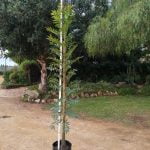
Ekebergia Capensis 20lt
Original price was: R550.00.R399.99Current price is: R399.99.Add to cartEkebergia Capensis 20lt
Common Names: Cape Ash, Dogplum, EssenhoutFull Sun
Low Watering
Indigenous
Evergreen
Drought Tolerant When EstablishedEkebergia capensis, commonly known as the Cape ash or African ash, is a tree species native to South Africa.
Habitat: Ekebergia capensis is found in various parts of South Africa, including the Cape Peninsula, Eastern Cape, KwaZulu-Natal, Mpumalanga, and Limpopo. It typically grows in woodland and forest habitats, often near rivers or in moist areas.
Description: It is a medium-sized to large deciduous tree that can reach heights of up to 20 meters. The tree has a dense, rounded crown and a straight trunk. The bark is greyish-brown and becomes rough and fissured as the tree matures. The leaves are compound, with leaflets arranged in pairs, and they are shiny dark green in colour.
Flowers and Fruits: Ekebergia capensis produces small, creamy-white flowers in dense clusters. The flowers are fragrant and attract bees and other insects for pollination. After pollination, the tree develops small, round fruits that turn purple when ripe. The fruit contains a single seed and is edible, but not commonly consumed by humans.
Uses: Ekebergia capensis has several uses in traditional medicine and cultural practices. Various parts of the tree, such as the bark, leaves, and roots, are used for their medicinal properties. The wood is durable and used in construction, furniture making, and for fuel. The tree also has some cultural significance and is often planted as an ornamental tree in gardens and public spaces.
Conservation status: Ekebergia capensis is not currently listed as a threatened species. However, like many tree species, it can face threats from habitat loss, deforestation, and invasive species. Conservation efforts are important to preserve the natural habitats where this tree species occurs.
-
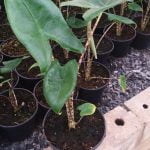
Alocasia Zebrina 14cm Pot
R275.00Add to cartAlocasia Zebrina 14cm Pot
Water well when needed.
Loves bright sunlight but not direct sun on the leaves or they will burn.
Turn weekly to prevent stems from growing towards to the sunlight. -
Sale!

Delicious Monster 19cm Pot
Original price was: R375.00.R195.00Current price is: R195.00.Add to cartDelicious monster 19cm Pot
-
Sale!
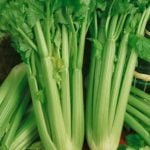
Celery 6 pack
Original price was: R60.00.R49.99Current price is: R49.99.Add to cartCelery 6 pack
Growing your own vegetables offers numerous benefits, both for your health and overall well-being. Here are some of the key advantages of cultivating your own vegetables:
1. Nutritional Value: Homegrown vegetables are incredibly fresh and packed with essential nutrients. They are harvested at their peak, ensuring optimal nutritional value. You have control over the cultivation methods, allowing you to avoid pesticides or other harmful chemicals.
2. Health and Wellness: Consuming homegrown vegetables promotes a healthier lifestyle. They are typically richer in vitamins, minerals, and antioxidants, which can boost your immune system, improve digestion, and lower the risk of chronic diseases such as heart disease and certain cancers.
3. Cost Savings: Growing your own vegetables can save you money in the long run. The initial investment in plants, soil, and tools may be modest, and the ongoing expenses are significantly lower compared to purchasing fresh produce from the market. Plus, you can grow a variety of vegetables at a fraction of the cost of buying them.
4. Taste and Flavour: Homegrown vegetables often have superior taste and flavour compared to store-bought produce. You can pick them at the peak of ripeness, allowing you to savour the true essence of each vegetable. The freshness and flavours of your homegrown vegetables can enhance your culinary experiences.
5. Environmental Sustainability: Cultivating your own vegetables promotes sustainable practices. By growing your food locally, you reduce the carbon footprint associated with long-distance transportation, packaging waste, and the use of harmful chemicals. Additionally, you can compost kitchen scraps and organic waste, minimizing landfill contributions.
6. Physical Activity and Stress Relief: Gardening is an excellent form of physical activity. It involves various tasks like digging, planting, weeding, and harvesting, which can provide exercise for your body. Engaging in gardening activities can also be therapeutic, reducing stress, anxiety, and promoting relaxation.
7. Educational and Skill Development: Growing your own vegetables offers a valuable learning experience for both children and adults. It allows you to understand the importance of sustainable agriculture, appreciate the effort involved in food production, and gain knowledge about plant biology and gardening techniques. It can also encourage a sense of responsibility and patience.
8. Food Security: Having your own vegetable garden contributes to food security. It provides you with a reliable source of fresh produce, reducing dependence on external suppliers. In times of emergencies or disruptions in the food supply chain, you can rely on the sustenance from your homegrown vegetables.
9. Aesthetics and Connection with Nature: Growing vegetables adds beauty to your surroundings. A well-maintained garden can enhance the aesthetics of your home and create a peaceful environment. It allows you to reconnect with nature, appreciate the seasons, and gain a sense of accomplishment.
Overall, growing your own vegetables offers a multitude of benefits, including improved nutrition, cost savings, environmental sustainability, physical activity, and a deeper connection with nature. It’s a rewarding endeavour that can positively impact your health, well-being, and overall quality of life.
-
Sale!

Pear Tree (Pyrus communis) 20lt
Original price was: R700.00.R415.00Current price is: R415.00.Select options This product has multiple variants. The options may be chosen on the product pagePear Tree (Pyrus communis) 20lt
Choose Between These Trees (Pollinator in brackets)
Early Bon Chretien (Forelle) (Early Jan, Green/yellow skin, white flesh)
Forelle (Early Bon Chretien) (End Feb, Yellow with red skin, white flesh)
Kieffer (Packham) (Early March, Green/yellow skin, white flesh)
Packham (Rosemarie) (Mid Feb, Green/yellow skin, white flesh)
Rosemarie (Packham) (Early Jan, Yellow with red skin, white flesh) -
Sale!

Key Lime (Citrus aurantifolia) 20lt
Original price was: R700.00.R495.00Current price is: R495.00.Add to cartCitrus aurantifolia 20lt (Key Lime)
Common Name: West indian Lime, Key Lime, Mexican LimeFull Sun
Afternoon Sun
Medium Watering -
Sale!

Leucadendron Safari Sunset 15cm Pot
All Plants, Full Sun Plants, Indigenous Plants, Leucadendron Plants (Cone Bushes), Water Wise PlantsOriginal price was: R185.00.R124.99Current price is: R124.99.Add to cartLeucadendron Safari Sunset 15cm Pot
Full Sun
Afternoon Sun
Indigenous
Low Watering
Evergreen
Drought ResistantThese are a must for any water wise gardener. Its red stems and deep-green, red-tinged leaves are complemented by big, showy, vivid red flowers which burst into bloom through autumn and winter.
They can be grown as a stand alone or as a low laying hedge plant.
They are also pot friendly and grow to about 1.5m in height. -
Sale!
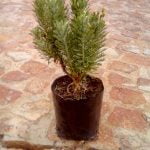
Euryops Silver Sunshine 15cm
Original price was: R95.00.R85.00Current price is: R85.00.Add to cartEuryops Silver Sunshine 15cm
Common Name: Silver Daisy, Resin bushFull Sun
Indigenous
Medium Watering
Evergreen
Drought ResistantSilver-green shrub that grows to about 1m in height with yellow daisy-like flowers. They flower nearly all year round
-
Sale!
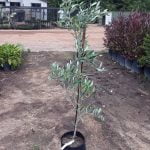
Olive Frantoio 10lt
Original price was: R495.00.R375.00Current price is: R375.00.Add to cartOlive Frantoio 10lt
-

Buddleja Saligna 70lt
70lt Trees, All Plants, Full Sun Plants, Hedging Plants, Indigenous Plants, Semi Shade Plants, Water Wise PlantsR2,595.00Add to cartBuddleja Saligna 70lt
Buddleja saligna, commonly known as the False Olive or White Olive, is a species of flowering shrub or small tree belonging to the Buddlejaceae family. It is native to southern Africa, specifically found in countries such as South Africa, Mozambique, and Zimbabwe.
Appearance: The False Olive is a fast-growing evergreen shrub or small tree that can reach heights of about 5 to 10 meters. It has a dense, rounded canopy and pendulous branches.
Leaves: The leaves are lance-shaped or elongated, measuring around 5-12 cm in length. They are dark green on the upper side and have a silvery or greyish appearance on the lower side.
Flowers: The shrub produces fragrant, small, tubular, creamy-white flowers that are arranged in slender, elongated clusters. These flower clusters can be quite attractive to butterflies and other pollinators.
Fruit: After flowering, Buddleja saligna develops small, woody capsules containing tiny seeds.
Habitat: The False Olive is well-adapted to a variety of habitats, from coastal areas to rocky slopes and open woodlands. It is also common in disturbed areas and can be considered a pioneer species.
Uses: In some regions, Buddleja saligna has been used for various purposes. For example, the wood is occasionally used for furniture, and the leaves and bark have traditional medicinal uses. The plant is also valued for its role in attracting wildlife, particularly butterflies and birds, making it a popular choice in gardens and landscapes for biodiversity and wildlife conservation.
